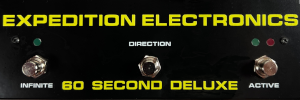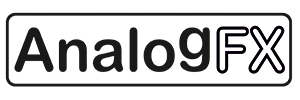Showing posts sorted by relevance for query Buchla 700. Sort by date Show all posts
Showing posts sorted by relevance for query Buchla 700. Sort by date Show all posts
Tuesday, April 02, 2019
Instrument Designer: Rare Buchla 700 Synth Coming to Software on Mac, Windows & iOS
via modosc designs
"a modern interpretation of the buchla 700, coming soon for mac, windows, and ios."
If you are not familiar with the Buchla 700, check out Chimeror by Benge on Vintage Buchla 700. According to that post, only about 12 of these machines were ever produced, and there are possibly only 4 working examples left in existence.
Update: Some additional info via modosc designs:
On the developer: "Jonathan Schatz has spent his life pursuing dual passions of music and computing, occasionally simultaneously. One of these convergences led to working with Don Buchla on the 200e system for several years. The latest such convergence is Modosc Designs."
FAQ:
"What is Instrument Designer?
Instrument Designer is a software synthesizer inspired by the Buchla 700.
Ok, what is the Buchla 700?
The Buchla 700 is a 12 voice 4 operator FM synth released in 1987 and designed by Don Buchla. There are several main ways the 700 differentiates itself from the other FM synths common in the industry at that time:
Each algorithm outputs through two independant waveshapers. This allows a single instrument defintion to output two different audio signals without requiring a separate stacked voice. This also increases the sonic palette by allowing a user to easily create non-sinusoid waveforms.
The waveshapers are cousins to the ones use in the Buchla Touche, Buchla 400 and the Buchla 259e. They are quite unique and use some interesting waveshaping techniques.
Each voice has 13 complex envelopes which control almost every aspect of the sound algorithm. The envelopes have a unique exponential display, are programmable with an arbitrary number of breakpoints, and include programmable features such as looping.
Programming was simplified with the help of a graphical user interface and an external monitor.
What does it sound like?
There weren't a lot of these produced so there's not that much out there, but what is out there is quite interesting:
Charles Cohen — Generator
Benge — Chimeror
Ode To Gravity — this is from the release party for the 700 and includes interviews with Don
So what happened to it?
The instrument never became very popular and today is one of the rarer of Don Buchla's instruments (which says a lot). The software itself was never finished, and the video card which connected up the external display was unreliable and eventually end-of-lifed by Intel. Probably 15-20 of these were made - I personally know of 3, of which only 1 currently works.
Why hasn't anyone made a reissue?
Good question. The design is quite complicated and includes 4 separate computers as well as a large membrane input surface. It would certainly be possible to build but it wouldn't be a cheap endevor, and unlike other recent reissues it probably wouldn't be a big seller - it's likely the most difficult instrument of Don's to use.
So why are you bothering?
I love the sound of Don's wavetable synths (specifically the 259e) and I've spent a lot of time implementing and reimplenting various related algorithms. I had the opportunity to play around with a 700 a few years back and the idea was hatched there.
Are you using the original source code?
No. This entire project was implemented using a scan of the original 700 manual as the spec (which was the usual Don way of doing things). You can view the original source code here, which is interesting because it seemingly contains code used for a NASA project as well:
Set ON_B700 non-zero to get a Buchla 700 PROM, or zero to get a NASA 3D Helmet Display PROM.
That source dump from Lynx Crowe is unfortunately incomplete but there is a project that's managed to get it to boot. Unfortunately the source code only includes some of the controller code and none of the DSP code so currently there's no sound generation.
Where can I learn more about the Buchla 700?
The Buchla 700 Preservation Page
Notes on the Buchla 700 audio synthesizer
Buchla 700 archeology
Buchla 700
Chimeror by Benge
The Buchla 700 Emulation Project
Alessandro Cortini of Nine Inch Nails playing a Buchla 700 in Twin Peaks — I don't know if the sound is actually 700 or not but who cares?"
Saturday, October 12, 2024
New Buchla 700FM Format Modular
video uploads by Gm Xe
This one is in via Soviet Space Child.
"Hi, I have been a buchla fan for a long time, and I have always been curious about buchla 700. I immediately bought the id 700 when it was available, which is really a great app. However, I like hardware instruments with intuitive operation. Thanks to my good friend kweiwen, who wrote the initial code for me, I opened this mysterious instrument. After half a year of learning and development, I finally completed this module. Although there are still some improvements to be made, I am very happy, the sound is really good, I try to make myself comfortable with it, so the design is based on personal habits.
The main program is written in max/msp, using daisyseed to implement gen ~ code burning. buchla700 is a very complex instrument, although it cannot be perfectly reproduced, I think half of the core content is there."
Playlist:
1. 700VOiCE Buchal format Walk through new Updated version introduction
Previous devlopement:
2. I made an fm module similar to buchla 700
3. Play note#1 new buchla format modular demo
4. 700_FM_Voice_Note4
5. 700voice upgrade test demo 1
6. 700 buchla format modular note#5


Additional details via Mod Wiggler
"I apologize for the delay; the new images and information are still being prepared. The images feature three modules: on the left, the 3U modules include the 700 expansion and 700 voice, while the 1U module on the right is an effects module that will be introduced separately later. Thank you for your patience!
In the realm of synthesizers, the nearly forgotten classic Buchla 700 is celebrated for its unique sound design. We are thrilled to introduce our tribute module, showcasing a distinctive 700 FM Voice module powered by re-optimized algorithms. With its intuitive interface, you can dive in effortlessly, whether you’re crafting intricate soundscapes or vibrant melodies. This module is designed to inspire creativity and unlock endless possibilities.
This module is a monophonic sound source featuring four variable waveform oscillators and six specialized algorithmic index amplifiers, creating complex modulation patterns with twelve algorithms. Each oscillator and index group can be individually controlled via CV inputs, with dedicated CV attenuation for each. It provides a dual-path mix output for Group A/B, enabling CV morphing, along with a separate output for channel B. Both A and B channels offer independent wave shapes and drift modulation. Each oscillator supports wave morphing between sine, saw, and square waveforms, with the option to expand using an additional 12 control knobs. Two OLED displays showcase configuration algorithm graphics and a dual-channel oscilloscope. The DA output is 48 kHz/24-bit, with finely tuned oscillator algorithms. Outputs are carefully calibrated through analog amplification circuits, fully compatible with Buchla-format CV modulation, and support 1.2 V/oct and MIDI input.
Tuesday, April 15, 2008
Buchla 700 Rare Synthesizer
via this auction

 "It has been rumored that there are 12. I have heard that number a bit higher and a bit lower depending on who you ask. There is a Buchla 700 Yahoo group for enthusiasts so there has to be at least a few of them. It is an awesome and truly unique piece of synthesizer gear.
"It has been rumored that there are 12. I have heard that number a bit higher and a bit lower depending on who you ask. There is a Buchla 700 Yahoo group for enthusiasts so there has to be at least a few of them. It is an awesome and truly unique piece of synthesizer gear.The condition is good. There is a tiny bit of tape residue from the time it spent at JL's repair shop many years ago on the black top and a few of the screws holding down the top panel are missing but easily replaced. The external video monitor output does not work (like about 99% of Buchla 700s). You do not need the monitor to make it work - just touch the panels and off you go. It makes amazing sounds - spatially rich and unlike anything you've heard before. You can hear a LIVE sampling on my myspace site - mainstreetelectricalparade. All the blinking lights work on the bottom and the sensors appear to work well - although it is such a bizarre instrument I am never sure what I am triggering and what is automatic.
It is being sold as a rare vintage instrument. 'As is' condition with no refunds. This is your chance to own an extremely rare experimental instrument. Please do not bid on it if you have no idea what it is.
There is a ton of info on the Buchla here:
Buchla
VSE
Included in the auction: The Buchla 700, a power cable, whatever 3.5" disks I got when I bought it many years ago...a working system 3.5" disk is in the drive currently. "
More via echo7even on AH: "a 700 in this particular condition is a very crippled instrument. The 700 is based around a Graphical User Interface which requires the VSDD chip be operational and a compatable monitor be connected. Otherwise you only get access to the single basic preset and a few of the parameters for the Osc Freq, Index and Filter...the strength of the 700 are the various Osc routings, 12+ X 96 Breakpoint Envelopes (per voice (12)) and user "Timbre Table" generation and the sequencers. other 700 woes are the *sealed membrane*, CEM chips, powersupply, disk drive & backlight. if it works tho it is one of the craziest FM synths ever developed... even has its own phase shifter."
Tuesday, November 01, 2005
Buchla 700
Shot of the Buchla 700 of the Audities Collection. Sent to me from rick, echo7even. Thanks rick!
Update: More on the Buchla 700

Snip from More on the Buchla 700:
"THE 700'S ARCHITECTURE includes four dedicated computers, each of a different nature, and each optimized to its particular function. The nerve center of the instrument is a general purpose digital computer. Responsible for user communication, data processing, and supervisory control, this "host" computer can be programmed to accommodate varied musical needs.
A second computer "massages" incoming data. It directs conversion of analog voltages into digital form, discards redundant information, and transmits essential data to the host computer.
Receiving instructions and data from the host, a third computer (called the multiple arbitrary function generator) directs the instantaneous progress of 190 acoustic variables, each with a time resolution of 1/2000 of a second. This facility enables specification of complex sonic detail and extends the possibilities for expressive control.
A fourth computer, essentially a pipelined digital signal processor (DSP), is responsible for producing the 700's twelve voices. Built into this computer are unusually powerful algorithms for sound generation, including frequency modulation, waveshape interpolation, and timbre modulation (unique to the Buchla, this technique significantly augments the electronic vocabulary."
Update: More on the Buchla 700

Snip from More on the Buchla 700:
"THE 700'S ARCHITECTURE includes four dedicated computers, each of a different nature, and each optimized to its particular function. The nerve center of the instrument is a general purpose digital computer. Responsible for user communication, data processing, and supervisory control, this "host" computer can be programmed to accommodate varied musical needs.
A second computer "massages" incoming data. It directs conversion of analog voltages into digital form, discards redundant information, and transmits essential data to the host computer.
Receiving instructions and data from the host, a third computer (called the multiple arbitrary function generator) directs the instantaneous progress of 190 acoustic variables, each with a time resolution of 1/2000 of a second. This facility enables specification of complex sonic detail and extends the possibilities for expressive control.
A fourth computer, essentially a pipelined digital signal processor (DSP), is responsible for producing the 700's twelve voices. Built into this computer are unusually powerful algorithms for sound generation, including frequency modulation, waveshape interpolation, and timbre modulation (unique to the Buchla, this technique significantly augments the electronic vocabulary."
Sunday, August 17, 2008
Buchla 700 Preservation Page
 The page includes newly added source code for the Buchla 700: "Source code for the Buchla 700, courtesy Lynx Crowe. This code is provided as-is with no guarantees of completeness or correctness; it's a compilation of various bits of relevant code that Lynx found going through his archives. If you want to delve into this, you are "on your own." Development was done with an Alcyon C compiler on an Atari 1040ST, although it should be feasible to find a modern compiler that will handle this code. Knowledgeable people with time on their hands could potentially do all sorts of neat things with this, such as (a) create some sort of hardware/software upgrade to the 700 that would allow users to bypass the trouble-prone and difficult-to-find video chip, (b) add features to and fix bugs in the software, and (c) create a softsynth rendition of the 700. It's also a fantastic chance to look at the design of a synth OS by one of the pioneers in the field. Please give Lynx proper acknowledgement on anything you do this this. If you have any commercial aspirations, i.e. you plan to actually sell anything based on this, you should contact Lynx to talk about some sort of licensing arrangement."
The page includes newly added source code for the Buchla 700: "Source code for the Buchla 700, courtesy Lynx Crowe. This code is provided as-is with no guarantees of completeness or correctness; it's a compilation of various bits of relevant code that Lynx found going through his archives. If you want to delve into this, you are "on your own." Development was done with an Alcyon C compiler on an Atari 1040ST, although it should be feasible to find a modern compiler that will handle this code. Knowledgeable people with time on their hands could potentially do all sorts of neat things with this, such as (a) create some sort of hardware/software upgrade to the 700 that would allow users to bypass the trouble-prone and difficult-to-find video chip, (b) add features to and fix bugs in the software, and (c) create a softsynth rendition of the 700. It's also a fantastic chance to look at the design of a synth OS by one of the pioneers in the field. Please give Lynx proper acknowledgement on anything you do this this. If you have any commercial aspirations, i.e. you plan to actually sell anything based on this, you should contact Lynx to talk about some sort of licensing arrangement."click here and scroll to see prior posts on the Buchla 700 including video.
Sunday, June 16, 2013
Chimeror by Benge on Vintage Buchla 700
Published on Jun 16, 2013 zack dagoba·231 videos
http://myblogitsfullofstars.blogspot.com
Update: some updates in grey below.
"In December 2012 I was visiting a friend in Vancouver, BC and he showed me his working example of the legendary Buchla 700 analog / digital hybrid synthesiser. This highly advanced synthesiser was developed and produced in the late 1980s by Californian electronic instrument pioneer Don Buchla, using proprietory hardware and software components. About 12 of these machines were ever produced, and there are possibly only 4 working examples left in existance. My friend showed me some of its sound producing capabilities and then left me to explore for myself. Presented here are the results of the hour or so that I had alone with this machine
Donald Buchla began makng electronic musical instruments in 1963 with his 100 series modules appearing in 1965, which introduced the concept of analog voltage control to musical instruments (bode did it in 1959 and moog in 1964 - Moog started work with Herb Deutsch on the first Moog modular systems in 1963). He then produced the 200 series modules in the early 1970s and continued developing systems and modules of greater complexity utilising digital control and eventually microprocessor control, culminating in the 700 system in the late 1980s. More recently Buchla introduced the 200e modules which he continues to develop
The five compositions were recorded directly to computer using overdubbing in places. No additional processing was applied. See below for a full overview of the Buchla 700 system
Track Listing:
1 - Chime One (5.06)
2 - Chime Two (4.56)
3 - Chime Three (3.06)
4 - Chime Four (2.26)
5 - Chime Five (11.24)
Total Duration (27.02)
credits
released 15 June 2013
Recorded in Vancouver, BC, December 2012
Special thanks to R.Smith for the use of his Buchla700
All Music and Design by Benge (c)2012 Ben Edwards (Benge)
All Rights Reserved
www.memetune.net
www.expandingrecords.com
www.buchla.com
myblogitsfullofstars.blogspot.com"
Saturday, April 10, 2021
ID700 - Software Synth Based on the Buchla 700
via https://modo.sc/id700/
Available on the App Store here.
 "In 1987 Don Buchla released the Buchla 700 synthesizer. It was the next logical step from Don's previous digital synths (the Buchla 400, Touche, Buchla 500) but was also influenced by the synth trends of the 1980's, specifically FM synthesis and the all-in-one workstation concept. As usual, Don was ahead of the curve and the 700 never took off. Very few were sold and even fewer functioning units exist today. I always loved the sound of Don's digital oscillators, and combined with the scarcity of the instrument it seemed like a fun project to recreate it in software and reintroduce its concepts to the world.
"In 1987 Don Buchla released the Buchla 700 synthesizer. It was the next logical step from Don's previous digital synths (the Buchla 400, Touche, Buchla 500) but was also influenced by the synth trends of the 1980's, specifically FM synthesis and the all-in-one workstation concept. As usual, Don was ahead of the curve and the 700 never took off. Very few were sold and even fewer functioning units exist today. I always loved the sound of Don's digital oscillators, and combined with the scarcity of the instrument it seemed like a fun project to recreate it in software and reintroduce its concepts to the world.
 ID700 is a software synthesizer based on the voice architecture of the Buchla 700. Like many of Don's other designs, sound generation is achieved primarily via FM synthesis and waveshaping. Each voice is made up of sixteen individual modules:
ID700 is a software synthesizer based on the voice architecture of the Buchla 700. Like many of Don's other designs, sound generation is achieved primarily via FM synthesis and waveshaping. Each voice is made up of sixteen individual modules:
four Oscillators
six Indexes
two Waves
one Morph
one Filter
one Amplifier
one Location
The Oscillators, Indexes, and Waves are configured in one of twelve preset Algorithms, all of which feed into the fixed signal paths of the Morph, Filter, Amplifier, and Location modules.
Each of the Oscillator, Index, Morph, Filter, Amplifier, and Location modules have their own dedicated complex Envelope for modulation.
The Wave modules provide wavetable synthesis using Chebyshev polynomials and include additional waveshaping functionality.
Arbitrary tunings are supported via the Scala Tuning File format.
MIDI and MPE are supported (note: not all hosts support MPE).
The iOS version supports AUv3 and IAA."
Update: demos posted here.
Wednesday, July 31, 2019
Shasta Cults - Configurations - Buchla 700 Release
Shasta Cults - Configurations - Available Sept 13, 2019 Published on Jul 30, 2019
"pre-orders available now via: imprec.com
A ship sinks beneath the silver mirror of the sea-top, temple gongs ring through an empty valley, industrial machinery sputters, heaves, lurches forward, stops, falls apart… These sound events may be the most acute musical referents of Shasta Cults, the music project of Canadian synthesizer technician Richard Smith. Using obsolete electronics, Shasta Cults pursues the true sound of the instrument, freed from the tyranny of emulation, no strings/woodwinds/piano presets. Shasta Cults' compositions seek out unchartered territories where sustained drones may swell, build, or evaporate; where timbres collide, amplitudes fluctuate, sounds emerge, raw, primeval, new hybrids form from the collisions of electricity and frequency. There may be stretches of silence punctuated by bell-ish tones from futures unheard; a sequence of notes may verge upon melody before mutating into ugly moans, the sonic equivalent of funhouse mirrors. But the end result is far more than chance operation, sporadic sound fields, or indeterminate academic exercise. Instead, Shasta Cults brings us back to nature, back to the possibilities inherent in nature, to the truth of evolution, stitching both musical tones, and the sounds of 21st century living into a form which is as real, as imponderable, and as ungovernable as our own memories.
Recorded in 2017, employing the processes of non-linear waveshaping, frequency modulation and feedback, Configurations consists of eight programs captured live to multitrack using a rare, fully functional Buchla 700 digital-hybrid instrument designed in the late 1980s. Whereas previously released works made with the 700 almost always consist in simple manipulations of the single factory preset, this album delves deep into the instrument's rich sonic vocabulary to offer the listener a more elaborate demonstration of the system's capabilities.
Presented here in limited quantities this release is intended as a high fidelity audio archive of this obscure musical artifact."
All Buchla 700 and effects.. a 266 controlling filter cutoff on one track.
Monday, June 16, 2025
"700 Concrète"⚡️🎛️ - Buchla Thunder / Buchla 700
video upload by Stephano Gavilanes
"A new musique concréte improvisation with Buchla 700 emulations and my very own samples triggered with the Buchla Thunder as 8 simultaneous midi channels👌🏽
The album with recordings done only with both the Buchla Thunder and Lighting sets is happening💫
Headphones or loudspeakers suggested!
Music composed and recorded by Stephano Gavilanes.© Copyright 2025. All rights reserved."
Friday, September 20, 2019
Configurations by Shasta Cults Now Available
Announced back in July 31, Shasta Cults' Configurations composed on the Buchla 700 is now available on Bandcamp.
"Recorded in 2017, employing the processes of non-linear waveshaping, frequency modulation and feedback, Configurations consists of eight programs captured live to multitrack using a rare, fully functional Buchla 700 digital-hybrid instrument designed in the late 1980s. Whereas previously released works made with the 700 almost always consist in simple manipulations of the single factory preset, this album delves deep into the instrument's rich sonic vocabulary to offer the listener a more elaborate demonstration of the system's capabilities."
Tuesday, January 22, 2008
Buchla

via christian mirande
"here's a picture of a buchla 500 that i've never seen posted before. it's most buchla 200 stuff, that 500 series keyboard controller, and the 300 series patchbay (same as in ciani's) and osc bank (i think, i forget what david told me it was, it's in his 300 too). got it from the buchla 700 group. there's some other shots there too.
top: 281, 292, 227, 207, 257
middle: #, 296, %, 266, 285, 230
proprietary 500 keyboard controller
# - 500/300 series wavetable osc right? i forget, corrections?
% - 500/300 series patchbay, for get the numbers, similar two the 228-2 (228-1?) or the strips; used in Ciani's 300
 Here's a link to a set i played with easel player charles cohen if your interested. i've been trying to get him to do some sound samples or youtube vids. its under br'er and Charles Cohen" [under Music on the right - the track features the Buchla Music Easel]
Here's a link to a set i played with easel player charles cohen if your interested. i've been trying to get him to do some sound samples or youtube vids. its under br'er and Charles Cohen" [under Music on the right - the track features the Buchla Music Easel]images:
charles playing out recently, his other 200, the easel (and some guys laptop)

Thursday, June 28, 2007
Serge Modular
Click here for shots via this auction.
Details:
"SMOOTH FUNCTION GENERATOR, NOISE SOURCE, DUAL ANALOG SHIFT REGISTER, DUAL UNIVERSAL SLOPE GENERATOR, DUAL PHASER, UNIVERSAL EQUAL POWER AUDIO PROCESSOR, TIMBRAL OSCILLATOR, PRECISION VCO (TWO OF THESE), WAVE MULTIPLIER, VARIABLE Q VCF, DUAL TRANSIENT GENERATOR, DUAL AUDIO MIXER, TOUCH ACTIVATED KEYBOARD SEQUENCER.
Serge gets its name from Serge Tcherepnin (pronounced "Cher - epp - nin"), a multitalented composer and electronic designer born of Russian-Chinese parents and raised in France. Self-taught in electronic design and circuit building, Serge enjoyed doing 'junk electronic' projects early on, making tape compositions using various electronic noisemakers cobbled together out of transistor radios and the like.
After studying music and physics at Harvard and Princeton, he taught music composition at the California Institute of the Arts. This was the early 70's, the heyday of Moog, ARP, and Buchla synthesizers. Calarts had a few Buchla-equipped studios. These were expensive, highly sought-after instruments, kept under lock and key. Getting studio time on one at Calarts meant being either a recognized staff composer or someone who maneuvered themselves into favor. The Buchla, ARP, and Moog synthesizers were interesting in their way, but could be improved upon. They were both expensive and bulky, a system with a decent number of functions could take up a whole wall in a small room. Serge and students Rich Gold and Randy Cohen wondered what they could do about this. After kicking around some ideas, they decided they were going to do their own synthesizer.
The first modules were designed, soldered, and built at Serge's home in what was essentially a kitchen tabletop operation. Before long, the word got out to other professors, students, and musicians about this new synthesizer. They wanted a piece of the action. Serge set up a strange sort of guerrilla manufacturing operation at Calarts on a second-story courtyard balcony. People paid $700 upfront for parts, worked on the 'assembly line' soldering and building modules, and eventually got themselves a six-panel system. Somehow, the Calarts administration either didn't find out or wasn't too bothered by this.
Another interesting player in this drama was composer Morton Subotnik, a professor at Calarts. He had a long association with instrument designer Don Buchla in the early 60's, the two of them collaborating on fundamental aspects of synthesizer design. When Mort spoke, Don listened. Serge caught on to this, and sought to woo Morton away from the Buchlas, but that was difficult. Eventually, Serge did build Mort some custom equipment.
In the 70's Serge collaborated on the design and construction of TONTO, a large polyphonic modular system. TONTO had the ancestry of many early Serge designs, some packaged behind faux-Moog front panels, including the NTO.
Serge eventually quit teaching and began to build synthesizers more seriously, using the first designs as a springboard. The Serge company was started in 1975, in the West Hollywood area, then headed north to San Francisco's Haight Street a few years later. It was always a humble bohemian concern, running more on enthusiasm and the love of making music than money and hardheaded business sense. Business tapered to a trickle in the middle 80's, and Serge, to support his family, started doing various outside electronic consulting projects. In 1992 Serge decided to move back to France. It was at this point that he sold the closely-guarded circuit designs to longtime associate Rex Probe, who then founded Sound Transform Systems. Production record keeping was pretty informal; it's estimated that "hundreds" of Serge systems were produced in the early years.
Today, Serge is again doing musical composition and is involved in helping Russian Jews move to Israel.
As Moog was a powerful East Coast influence that inspired ARP and Polyfusion, Buchla was the West Coast influence on Serge. Several Buchla designs, including the use of touch sensitive nontraditional keyboards, sequencers, random voltage generators, function generators, and matrix mixers found their way into Serge's repertoire. But that's not to say that Serge is merely a Buchla clone. Serge made many unique contributions, including the wave multiplier module, and some ideas were taken to new heights. Serge's oscillator designs have extraordinary accuracy and stability, especially considering their discrete nature. His philosophy of allowing the easy interplay of audio, control, and trigger signals, combined with the use of banana plugs, makes these systems wonderfully flexible.
There's no denying the amazing staying power of the Serge designs. Largely because of the development of convenient microprocessor-based keyboard synths, the 80's were a nasty time for analog synthesizer makers, practically all of them throwing in the towel. Serge's business slowed way down but never completely went out of production. With the recent clamoring for analog gear fueling successful production, Rex Probe and Sound Transform Systems look poised to carry the cream of analog modular music synthesis over the threshold of the 21st century, into their fourth decade of realization.
Sound Transform Systems has done a great job of continuing the analog modular lineage. Most of the traditional Serge modules are there, a few old ones were dropped, a few new ones added. The details are constantly being improved in many visible and invisible ways. They are still laboriously handmade, though the entire build process has been improved. Turnaround time has been improved from several months to 'just a couple'. All the components are top notch. The panel graphics and layout of many of the modules have been redesigned to make them more compact while keeping or improving the functionality. The circuit designs on many modules have been updated."
Tuesday, December 18, 2007
Serge Modular System
 images via this auction and this auction.
images via this auction and this auction.Auction 1:
QUANTIZER MODULE
ASR MODULE
ASR MODULE
DUAL TRANSIENT GENERATOR MODULE
RANDOM SOURCE MODULE
SMOOTH STEPPED GENERATOR
CV PRO MODULE
DUAL UNIVERSAL SLOPE GENERATOR
EXTENDED ADSR MODULE
SMOOTH FUNCTION GENERATOR
NOISE SOURCE MODULE
DUAL PROCESSOR MODULE
DUAL PROCESSOR SLOPE GENERATOR
PHASER MODULE
VOLT CONTROLLED STEREO MIXER
NEW TIMBRAL OSCILLATOR MODULE
PRECISION VCO (2 MODULES)
WAVE MULTIPLIER MODULE
VARIABLE QVCF MODULE
DUAL TRANSIENT GENERATOR
DUAL AUDIO MIXER MODULE
TOUCH ACTIVATED KEYBOARD SEQUENCER
 Auction 2:
Auction 2:"PREAMP DETECTOR
FREQUENCY SHIFTER
C/M MODULE
WILSON ANALOG DELAY MODULE
MIXER MODULE
VARIABLE SLOPE VCF
RESONANT EQUILIZER MODULE
DUAL PHASER MODULE
DUAL CHANNEL STEREO MIXER MODULE
Serge gets its name from Serge Tcherepnin (pronounced "Cher - epp - nin"), a multitalented composer and electronic designer born of Russian-Chinese parents and raised in France. Self-taught in electronic design and circuit building, Serge enjoyed doing 'junk electronic' projects early on, making tape compositions using various electronic noisemakers cobbled together out of transistor radios and the like.
After studying music and physics at Harvard and Princeton, he taught music composition at the California Institute of the Arts. This was the early 70's, the heyday of Moog, ARP, and Buchla synthesizers. Calarts had a few Buchla-equipped studios. These were expensive, highly sought-after instruments, kept under lock and key. Getting studio time on one at Calarts meant being either a recognized staff composer or someone who maneuvered themselves into favor. The Buchla, ARP, and Moog synthesizers were interesting in their way, but could be improved upon. They were both expensive and bulky, a system with a decent number of functions could take up a whole wall in a small room. Serge and students Rich Gold and Randy Cohen wondered what they could do about this. After kicking around some ideas, they decided they were going to do their own synthesizer.
 The first modules were designed, soldered, and built at Serge's home in what was essentially a kitchen tabletop operation. Before long, the word got out to other professors, students, and musicians about this new synthesizer. They wanted a piece of the action. Serge set up a strange sort of guerrilla manufacturing operation at Calarts on a second-story courtyard balcony. People paid $700 upfront for parts, worked on the 'assembly line' soldering and building modules, and eventually got themselves a six-panel system. Somehow, the Calarts administration either didn't find out or wasn't too bothered by this.
The first modules were designed, soldered, and built at Serge's home in what was essentially a kitchen tabletop operation. Before long, the word got out to other professors, students, and musicians about this new synthesizer. They wanted a piece of the action. Serge set up a strange sort of guerrilla manufacturing operation at Calarts on a second-story courtyard balcony. People paid $700 upfront for parts, worked on the 'assembly line' soldering and building modules, and eventually got themselves a six-panel system. Somehow, the Calarts administration either didn't find out or wasn't too bothered by this.Another interesting player in this drama was composer Morton Subotnik, a professor at Calarts. He had a long association with instrument designer Don Buchla in the early 60's, the two of them collaborating on fundamental aspects of synthesizer design. When Mort spoke, Don listened. Serge caught on to this, and sought to woo Morton away from the Buchlas, but that was difficult. Eventually, Serge did build Mort some custom equipment.
In the 70's Serge collaborated on the design and construction of TONTO, a large polyphonic modular system. TONTO had the ancestry of many early Serge designs, some packaged behind faux-Moog front panels, including the NTO.
Serge eventually quit teaching and began to build synthesizers more seriously, using the first designs as a springboard. The Serge company was started in 1975, in the West Hollywood area, then headed north to San Francisco's Haight Street a few years later. It was always a humble bohemian concern, running more on enthusiasm and the love of making music than money and hardheaded business sense. Business tapered to a trickle in the middle 80's, and Serge, to support his family, started doing various outside electronic consulting projects. In 1992 Serge decided to move back to France. It was at this point that he sold the closely-guarded circuit designs to longtime associate Rex Probe, who then founded Sound Transform Systems. Production record keeping was pretty informal; it's estimated that "hundreds" of Serge systems were produced in the early years.
Today, Serge is again doing musical composition and is involved in helping Russian Jews move to Israel.
 As Moog was a powerful East Coast influence that inspired ARP and Polyfusion, Buchla was the West Coast influence on Serge. Several Buchla designs, including the use of touch sensitive nontraditional keyboards, sequencers, random voltage generators, function generators, and matrix mixers found their way into Serge's repertoire. But that's not to say that Serge is merely a Buchla clone. Serge made many unique contributions, including the wave multiplier module, and some ideas were taken to new heights. Serge's oscillator designs have extraordinary accuracy and stability, especially considering their discrete nature. His philosophy of allowing the easy interplay of audio, control, and trigger signals, combined with the use of banana plugs, makes these systems wonderfully flexible.
As Moog was a powerful East Coast influence that inspired ARP and Polyfusion, Buchla was the West Coast influence on Serge. Several Buchla designs, including the use of touch sensitive nontraditional keyboards, sequencers, random voltage generators, function generators, and matrix mixers found their way into Serge's repertoire. But that's not to say that Serge is merely a Buchla clone. Serge made many unique contributions, including the wave multiplier module, and some ideas were taken to new heights. Serge's oscillator designs have extraordinary accuracy and stability, especially considering their discrete nature. His philosophy of allowing the easy interplay of audio, control, and trigger signals, combined with the use of banana plugs, makes these systems wonderfully flexible.There's no denying the amazing staying power of the Serge designs. Largely because of the development of convenient microprocessor-based keyboard synths, the 80's were a nasty time for analog synthesizer makers, practically all of them throwing in the towel. Serge's business slowed way down but never completely went out of production. With the recent clamoring for analog gear fueling successful production, Rex Probe and Sound Transform Systems look poised to carry the cream of analog modular music synthesis over the threshold of the 21st century, into their fourth decade of realization.
Sound Transform Systems has done a great job of continuing the analog modular lineage. Most of the traditional Serge modules are there, a few old ones were dropped, a few new ones added. The details are constantly being improved in many visible and invisible ways. They are still laboriously handmade, though the entire build process has been improved. Turnaround time has been improved from several months to 'just a couple'. All the components are top notch. The panel graphics and layout of many of the modules have been redesigned to make them more compact while keeping or improving the functionality. The circuit designs on many modules have been updated."
Monday, March 26, 2007
Thursday, April 26, 2012
Analog Drum 'n Bass
Analog Drum 'n Bass from K X on Vimeo.
"This is my imagining of what circa '98 era minimal tech step drum 'n bass may have sounded like had it been invented before modern samplers and digital synths / fx.
All the sound is being generated live, coming straight from the main mixer in the middle, with no multitracking. Sequenced by 3 vintage hardware sequencers, the Yamaha QX-1, Roland MC-4 and Roland MC-8 locked together by tape-sync.
List of the main gear used :
Sequencers : Roland MC-8, Roland MC-4, Yamaha QX-1
Modulars : Roland System 100 (Drums), Moog series 900 (pads), Roland System 700 (Basses), Arp 2500 system, Buchla 100 series.
Other Synths : Korg MS-20, Roland System 100 standalone synth.
FX : Roland Space Echo RE-501 (tape delay, chorus, spring reverb), Roland DC-30 (analog chorus-echo), Roland Dimension-D Analog Chorus.
Mixer : Tascam M308b"
Update: some additional info:
"If you're interested, the system 100 is doing all the drums, the moog is doing the atmospheric pad chords (as heard from the very beginning), the ARP is doing the stabs which are heard from very near the beginning, the system 700 is doing both the deep sub bass growls, and also the big ominous stabs in the middle build-up section (the MS-20 is just acting as a distortion unit for those), the system 100 standalone synth is doing the reese sound (as heard in the last bar before the drop), and the Buchla is doing all the main theme sounds which you can see if you look closely at the Buchla sequencer's timing lights during the main part.
The MC-4 is sequencing the drums and the reese, the MC-8 is sequencing the Moog and 700, and the QX-1 is sequencing the Buchla and Arp.
The whole project took almost 2 weeks, but nearly half of that was spent getting all the gear set up, synced up, talking to eachother nicely etc. Each day quite a bit of time was spent re-tweaking the sounds after the synths cooled down overnight, also the MC-4 program takes about 15 minutes just to load, (30 minutes to save including verify) and on top of that, the MC-8 refused to save at all, so I had to organise it so I could do all of the MC-8 programming and recording in one day. Next time it should take less time, since now I've got the setup all figured out."
Friday, April 25, 2025
Buchla 700 Synthesizer Description & Specifications Brochure
Note: Auction links are affiliate links for which the site may be compensated.
via this eBay listing
Additional Tone Tweakers Listings
"This came in with the Buchla 700 we may or may not eventually part with."
via this eBay listing
Additional Tone Tweakers Listings
"This came in with the Buchla 700 we may or may not eventually part with."
Monday, February 18, 2013
Martin J. Newcomb: The Museum of Synthesizer Technology
Note: Auction links are affiliate links for which the site may be compensated.

via this auction
"The Museum of Synthesizer Technology by Martin J. Newcombe (Privately Printed July 1994, First Printing; softcovers)
Scarce 118-page publication illustrating the collection of the short-lived (1994-1997) Museum of Synthesizer Technology in Berkshire.
Contents:
Foreword by Bob Moog
Aims and Services of the Museum
The Exhibits
A Voyage of Discovery
History of the Synthesizer
Moog - History of the Company
Moog - The Range of Instruments
Oberheim
E-mu
Buchla
Sequential
Arp
Polyfusion
EML
EMS
EDP
Roland
Miscellaneous
Including the synthesizers:

via this auction
"The Museum of Synthesizer Technology by Martin J. Newcombe (Privately Printed July 1994, First Printing; softcovers)
Scarce 118-page publication illustrating the collection of the short-lived (1994-1997) Museum of Synthesizer Technology in Berkshire.
Contents:
Foreword by Bob Moog
Aims and Services of the Museum
The Exhibits
A Voyage of Discovery
History of the Synthesizer
Moog - History of the Company
Moog - The Range of Instruments
Oberheim
E-mu
Buchla
Sequential
Arp
Polyfusion
EML
EMS
EDP
Roland
Miscellaneous
Including the synthesizers:
Monday, May 05, 2025
“Fluidity” ⚡️🎛️ - Buchla Thunder
video upload by Stephano Gavilanes
"Another musique concréte piece with Buchla 700 emulations and my very own samples triggered with the Buchla Thunder as 8 simultaneous midi channels👌🏽
I’m considering releasing an album with recording dones only with both the Buchla Thunder and Lighting sets💫
Headphones or loudspeakers suggested!
Music composed and recorded by Stephano Gavilanes.© Copyright 2025. All rights reserved."
Sunday, October 29, 2023
Stereo Transfer Function Synthesizer - Proof of Concept (Teensy)
video upload by Ryan Gaston
"A simple demonstration of some of the sounds yielded from a simple Teensy-based synthesizer. This is a proof of concept more than anything else; ultimately, this will be integrated into a more complete instrument.
The internal signal path is based on a combination of phase modulation, frequency modulation, and digital waveshaping via arbitrarily constructed transfer functions. Three oscillators intertwine in various ways, each contributing to the sound's instantaneous timbre, pitch, loudness, and sense of spatial location. The use of many internal feedback/feedforward nodes enhances the potential for chaotic, unpredictable sonic structures.
Originally, the idea was to create a stereo oscillator with transfer function-based waveshaping; however, I found that with a sufficiently knotted internal signal flow, it was possible to achieve a pretty astonishing range of animated sounds using relatively limited means. Though very much inspired by the Hordijk Blippoo Box, Hordijk Benjolin, Serge Wave Multipliers, Buchla Touché, Buchla 400, Buchla 700, and Buchla 259e, and some experimental works by Larry Polansky, I'm finding that there's much more sonic territory to be explored utilizing the bizarre combination of feedback and waveshaping via arbitrary transfer functions.
Again, I hope to continue to expand this into a more complete, performable instrument. But for now, enjoy some noise."
Sunday, October 30, 2005
Buchla 200e Analog vs. Digital
Update. Some notes worth posting via the comments:
Rick: "correction the new 261e Osc uses digital sine generation with pure analogue waveshaping.. where as the 259e uses digital generation and waveshaping in the form of "non-linear digital waveshaping"... read about this process..no other manufacturer offers this. FYI the Buchla 500, 300, 400 and 700 all used digital Oscillators with analogue output stages as is done in the 200e.. this is nothing new for Don.. it dates back to the early 70's instruments. in most cases the ear cant precieve the difference between an analogue or digitally generated sine tone...mine can't anyway."
Orth: "Well, after reading the FAQ, maybe we should just say that the Buchla is beyond traditional definitions of analog v digital. I mean jeez, that monster is something else at that point. a/d/a/d/a/d/a/d/a/d/a "
There's been some interesting discussion on the Buchla 200e on AH, including it's high price tag. You can pick and chose modules, but the listed systems start at $9300 and go on up to $27,400. See for yourself. What I actually found most interesting is that the system is a digital and anlog hybrid with fully digital oscillators. Buchlas are considered to be the holy grail in the synthesizer world along with just a few select others. Their sound and flexibility are considered to be worth it's high price. What's interesting to me is that one of the most common arguments you hear in the analog vs. digital debate is how analog sounds warmer and somehow better than digital. Some even argue that DCOs, digitally controlled oscillators, aren't truly analog and do not sound as good as their counterpart VCOs, voltage controlled oscillators. Yet Buchla went with digital. It's interesting when you consider the quality and pricetag of a Buchla. The title link takes you to the 200e faq which explains why.

Rick: "correction the new 261e Osc uses digital sine generation with pure analogue waveshaping.. where as the 259e uses digital generation and waveshaping in the form of "non-linear digital waveshaping"... read about this process..no other manufacturer offers this. FYI the Buchla 500, 300, 400 and 700 all used digital Oscillators with analogue output stages as is done in the 200e.. this is nothing new for Don.. it dates back to the early 70's instruments. in most cases the ear cant precieve the difference between an analogue or digitally generated sine tone...mine can't anyway."
Orth: "Well, after reading the FAQ, maybe we should just say that the Buchla is beyond traditional definitions of analog v digital. I mean jeez, that monster is something else at that point. a/d/a/d/a/d/a/d/a/d/a "
There's been some interesting discussion on the Buchla 200e on AH, including it's high price tag. You can pick and chose modules, but the listed systems start at $9300 and go on up to $27,400. See for yourself. What I actually found most interesting is that the system is a digital and anlog hybrid with fully digital oscillators. Buchlas are considered to be the holy grail in the synthesizer world along with just a few select others. Their sound and flexibility are considered to be worth it's high price. What's interesting to me is that one of the most common arguments you hear in the analog vs. digital debate is how analog sounds warmer and somehow better than digital. Some even argue that DCOs, digitally controlled oscillators, aren't truly analog and do not sound as good as their counterpart VCOs, voltage controlled oscillators. Yet Buchla went with digital. It's interesting when you consider the quality and pricetag of a Buchla. The title link takes you to the 200e faq which explains why.

NEXT PAGE
HOME
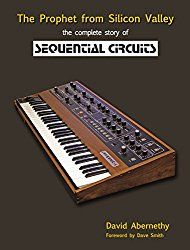



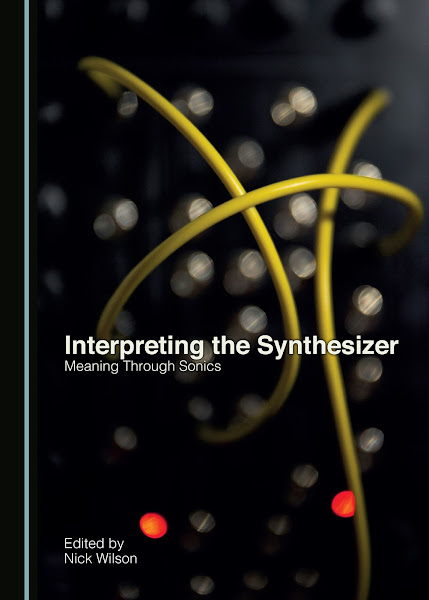
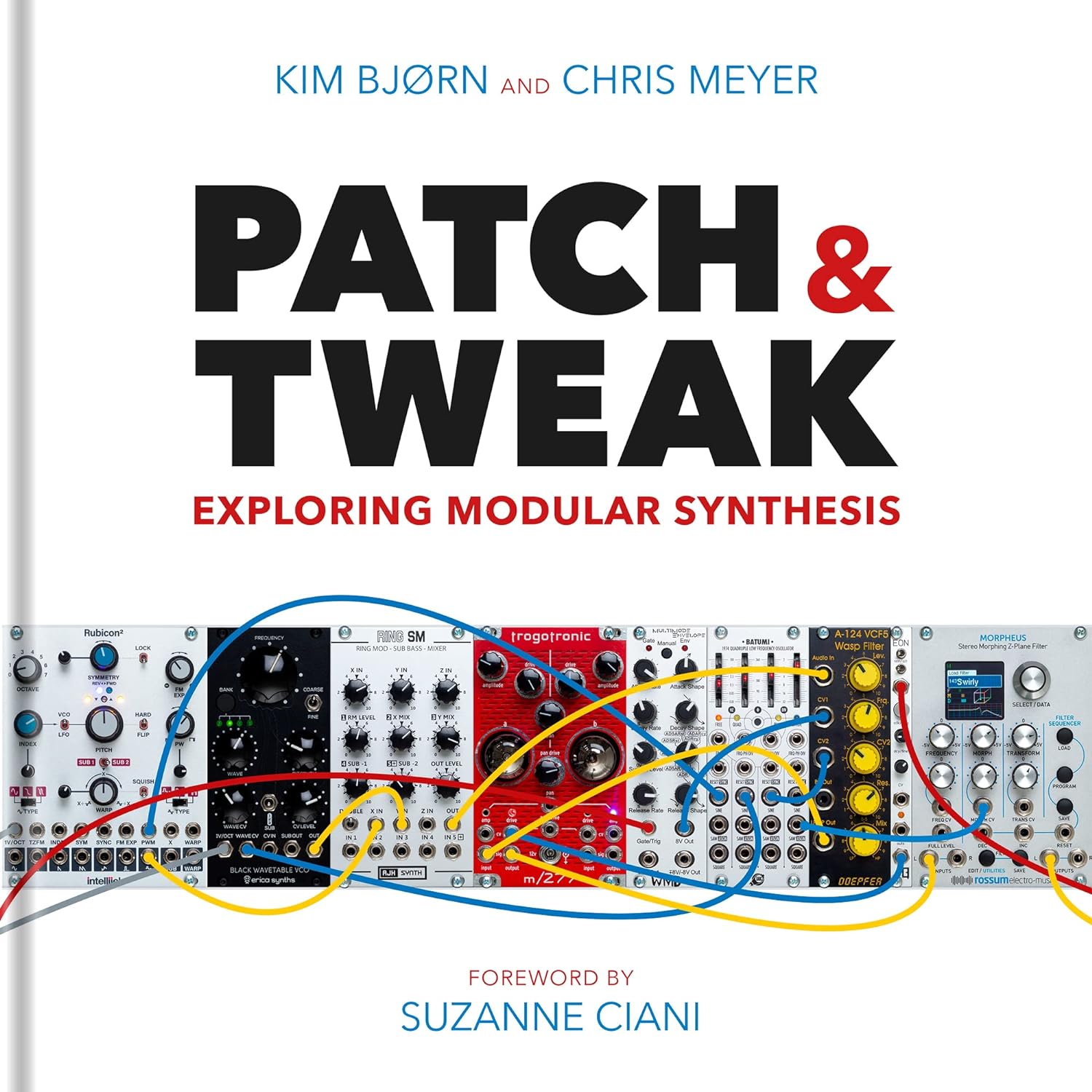

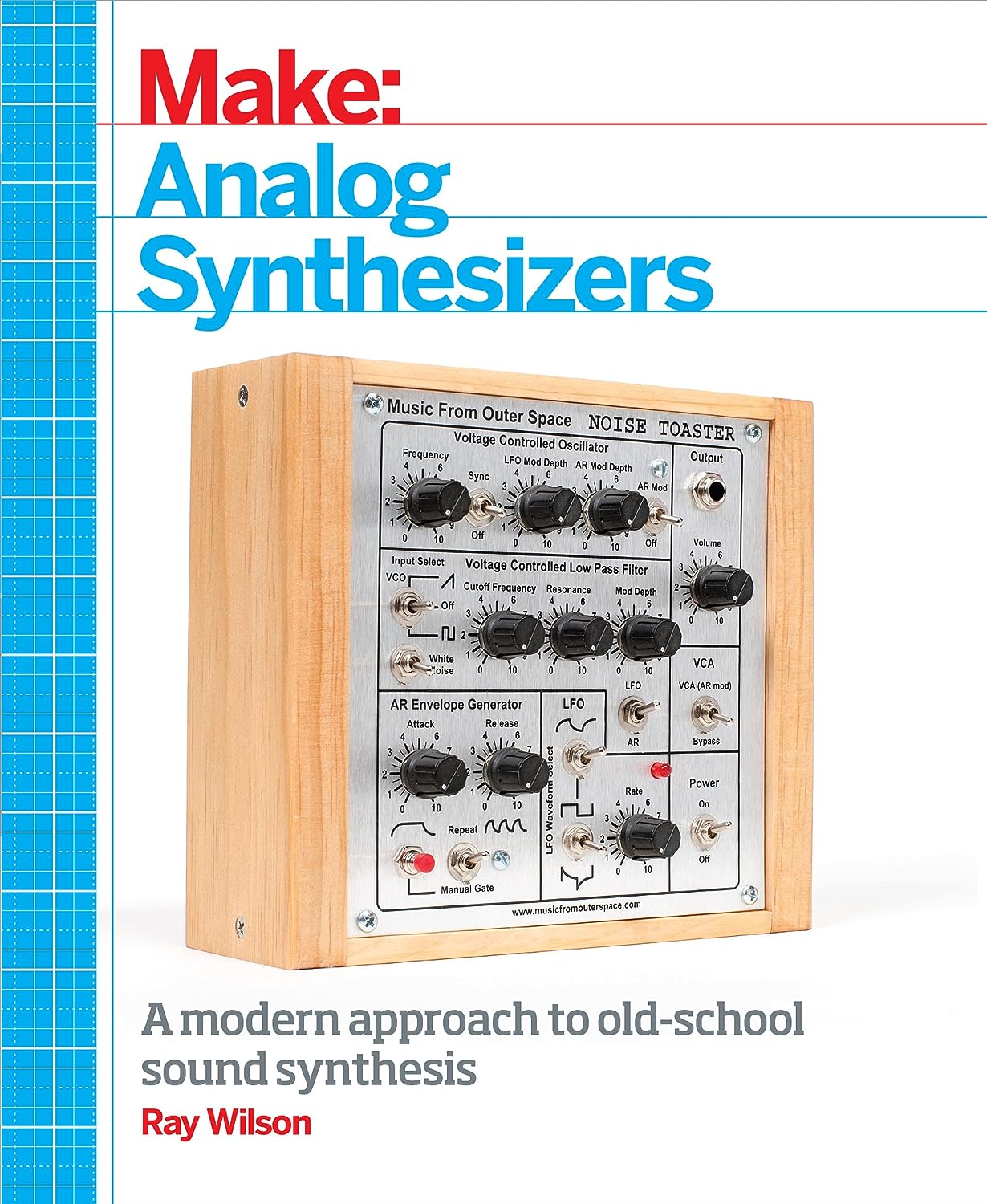

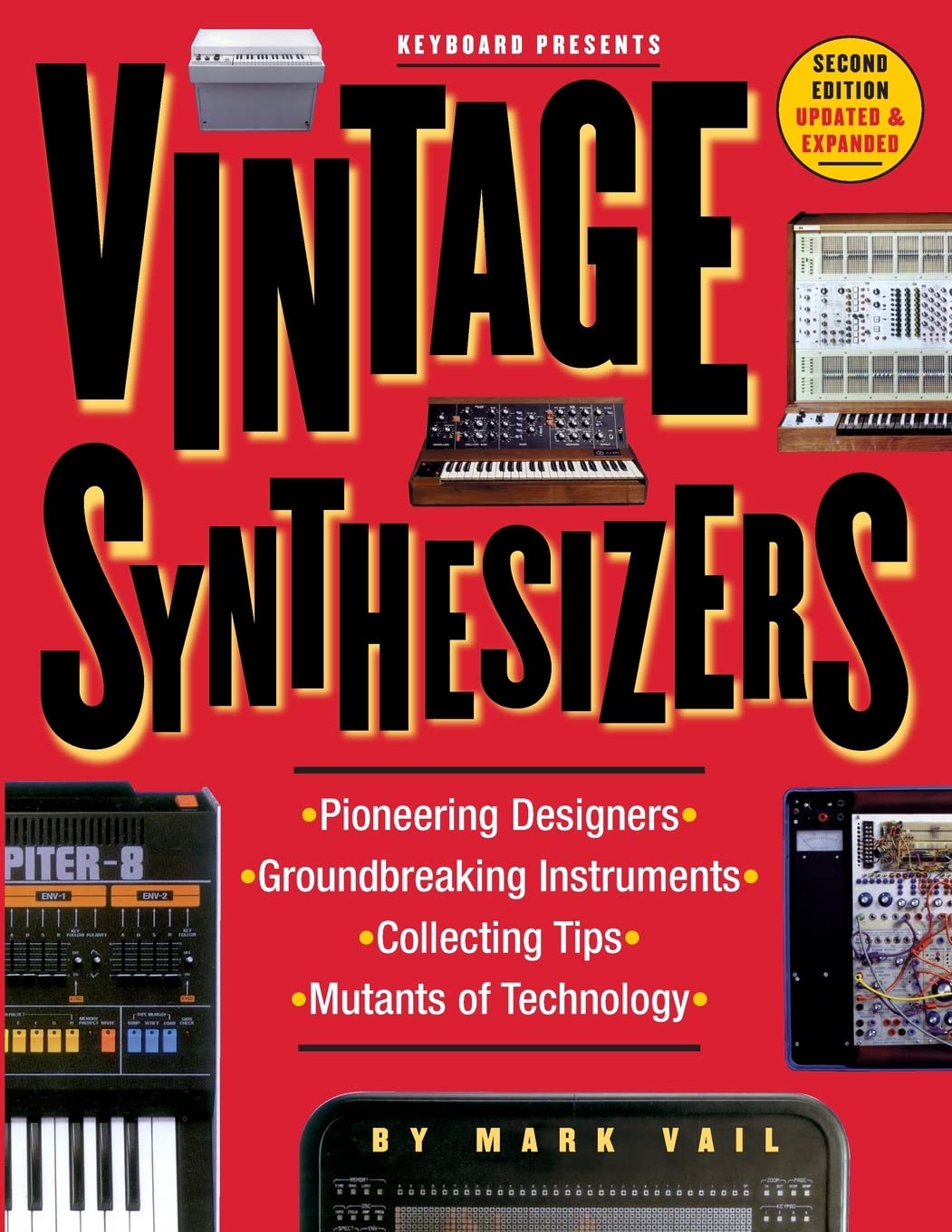
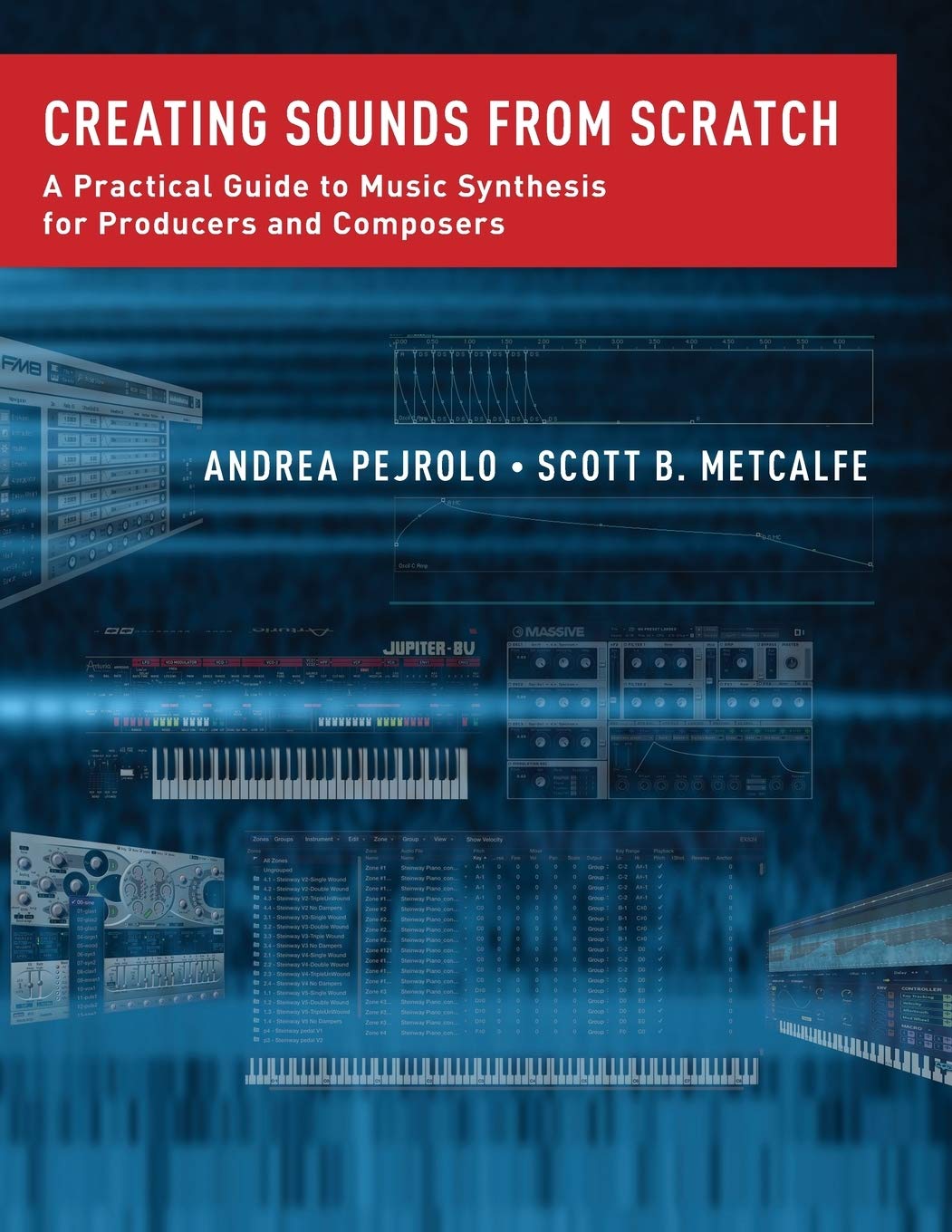
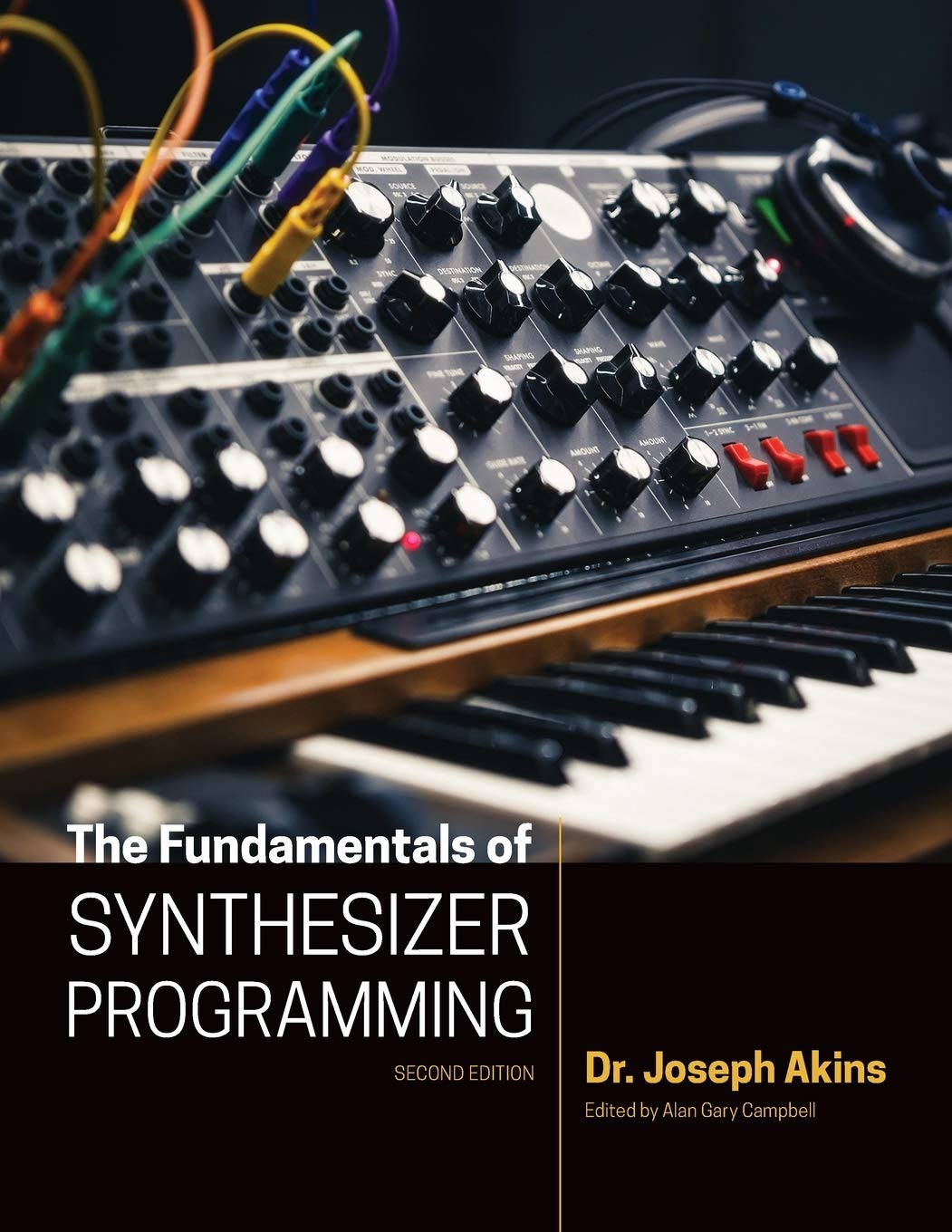

© Matrixsynth - All posts are presented here for informative, historical and educative purposes as applicable within fair use.
MATRIXSYNTH is supported by affiliate links that use cookies to track clickthroughs and sales. See the privacy policy for details.
MATRIXSYNTH - EVERYTHING SYNTH













© Matrixsynth - All posts are presented here for informative, historical and educative purposes as applicable within fair use.
MATRIXSYNTH is supported by affiliate links that use cookies to track clickthroughs and sales. See the privacy policy for details.
MATRIXSYNTH - EVERYTHING SYNTH

























